2-Day Instructor-Led Training
ServiceNow Official Content
Available for Private Team Training
ServiceNow Administration Advanced Training
Course 2539
- Duration: 2 days
- Language: English
- Level: Advanced
The ServiceNow Administration Advanced course teaches about the robust controls in the base instance in modules and labs to reinforce daily tasks. Course labs are designed step-by-step to facilitate the application of concepts.
This course explores the ServiceNow application and how it is defined. It continues by covering the components of an application, focusing on application scopes and the different types of application data. Development and Debugging tools are introduced. The course examines the importance of reporting. Also, ServiceNow’s ability to integrate with many third-party applications and data sources is analyzed. The course reviews how ServiceNow data visualizations enables the user to create and distribute reports that show the current state of instance data, such as how many open incidents of each priority exist. Tools for data hygiene are reviewed. The course emphasizes the importance of maintaining the system to provide a better user experience.
ServiceNow Admin Advanced Training Delivery Methods
Online
Upskill your whole team by bringing Private Team Training to your facility.
ServiceNow Admin Advanced Training Course Information
In this course, you will learn:
- Identifying ServiceNow applications and application components
- Explaining the difference between application configurations and customizations
- Introducing students to development and debugging tools
- Describing best practices for reporting efficiencies within the ServiceNow platform
- Discussing integrations with the ServiceNow platform
- Review good security practices available for an instance
- Identifying various factors affecting performance
Prerequisites:
ServiceNow Admin Advanced Training Outline
Day 1
Module 1: Application Data Management
Topic: Application Data Management
- ServiceNow Applications
- Components of an Application
- Application Scopes
- Application Data: Foundation vs. Process
- Accessing Application Data
- Maintain Data
- Examples
- Topic: Data Population
- Methods for Data Population
- What Are Update Sets?
- Named and Default Update Sets
- Lab 1.1.1 Configurations and Update Sets
Topic: Data Population Continued
- Import Sets
- Transform Maps
- What Is System Cloning?
- System Cloning: Benefits
- System Cloning: Exclusions, Preserve Data, and Cleanup Scripts
- Clone Admin Console
- Examples
- Instance Data Replication
- Integrations
- Lab 1.2.1 Clone an Instance
Topic: Data Searching
- Search Administration Overview
- Database Indexes
- Text Indexes
- Contextual Search
- Configuring Contextual Search
- Search Administration
- Lab 1.3.1 Create a Database Index
Module 2: Development and Debugging
Topic: Development
- Types of Development: No Code, Low Code, Pro Code
- Developer Tools: Code Editors
- Types of Scripting
- Developer Tools: No Code and Low Code Tools
- Developer Tools: Support
- Lab 2.1.1 Code or No Code / Low Code
Topic: Debugging
- Navigate Quickly: Unique Letters
- Navigate Quickly: Application Navigator
- Navigate Quickly: Navigate Directly to Table Configurations
- Navigate Quickly: Keyboard Shortcuts
- Show – ‘Field Name’
- Utility URLs
- URL
- Show XML
- Session Debug
- Detailed Session Debug
- Access Analyzer
- Lab 2.2.1 Session Debug
Topic: Debugging Continued
- Scripts - Background
- Fix Scripts
- Lab 2.2.2 Scripts - Background and Fix Scripts
Topic: Debugging Continued 2
- Script Debugger
- Script Tracer
- Lab 2.2.3 Script Debugger
Module 3: Application Data Management
Topic: Data Visualization Review
- Visualization Review
Topic: Database Views
- Database View
- Database View: Joining Tables
- Database View: Using a Join
- Database View: Restrict Returned Fields
- Lab 3.2.1 Create a Visualization Using a Database View
Topic: Data Sources for Reporting
- Data Source
- Data Source for Reporting
- Report Source
- Lab 3.3.1 Create a Report Source
Topic: Dashboards
- Dashboards
- Building a Dashboard
- Configuring a Dashboard
- Platform Analytics
- Benchmarks
- Lab 3.4.1 Create a Dashboard
Topic: Good Practices
- Good Practices: Slow Server Response
- Good Practices: Efficiencies
Day 2
Module 4: Integrations
Topic: Integrations Overview
- Integrations Overview
- The Big Picture
Topic: Web Services REST
- Web Services: What is a Web Service?
- Web Services: Inbound and Outbound
- Web Services APIs
- ServiceNow Provided APIs
- REST API Explorer
- Outbound REST Web Service
- Outbound REST Web Service Results
- Web Services: JSON
- Inbound Web Services with REST
- Lab 4.2.1: Web Services
Topic: Web Services REST continued
- ServiceNow as a Consumer
- ServiceNow as a Publisher
- Reasons to use SOAP
Topic: MID Server
- MID Server
- Consume Mid Server Data
Topic: Direct Web Services and Scripted Web Services
- Direct Web Services
- Scripted Web Services
Topic: Integration Hub
- Integration Hub
- Integration Hub Installed Spokes
- Connections Dashboard
- Action Designer
- Lab 4.5.1 Integration Hub
Module 5: Access and Security
Topic: Authentication, Authorization, Hardening
- Be Prepared
- Access Control: Authentication
- Access Control: Authentication Mechanisms
- Access Control: Multi-Factor Authentication (MFA)
- Data Control: Authorization
- Data Control: Anatomy of an ACL
- Data Control: Data Filtration
- Data Control: Data Filtration Attributes
- Data Control: Data Filtration Subject Criteria
- Data Control: Data Filtration Security Attribute
- Lab 5.1.1 Data Filtration
Topic: Authentication, Authorization, Hardening
- Instance Security: Instance Hardening
- Instance Security: Security Center
- Lab 5.2.1 Security Center
Topic: ServiceNow Vault
- ServiceNow Vault
Module 6: Platform Optimization and Maintenance-Data
Topic: Data Hygiene and CSDM
- Data Hygiene
- Schema Map
- Tables
- Table Cleaner
- Data Archiving
- Archiving Email
- Table Rotation
- Table Extension
- Import Set Scheduled Cleanup
- Cascade Delete Rules
- Reports and Dashboards
- Roll Back and Delete Recovery
Topic: Common Service Data Model
- Common Service Data Model Overview
- CSDM: What It Is, What It Is Not, What’s in It for You
- CSDM: Why?
- Process of Implementing CSDM
- Common Service Data Model Diagram
- CSDM Conclusion
Module 7: Platform Optimization and Maintenance - Instance
Topic: Performance Factors
- Application Performance
- Application Performance: Response Time Indicator
- Browser Rendering Performance: Form Optimization
- Browser Rendering Performance: Views
- Browser Rendering Performance: Optimize Performance and Minimize Clutter
- Browser Rendering Performance: Review Transaction Logs
- Browser Rendering Performance: Good Practices
Topic: : Instance Maintenance
- Instance Maintenance: Daily Activities - Instance Stats
- Instance Maintenance: Daily Activities - Slow Transactions
- Instance Maintenance: Daily Activities - User Preferences
- Instance Maintenance: Weekly Activities
- System Cloning: Exclusions, Preserve Data, and Cleanup Scripts
- Instance Maintenance: Monthly Activities - Slow Queries
- Instance Maintenance: Monthly Activities - Slow Scripts
- Instance Maintenance: Ongoing Activities
- Lab 7.2.1: Explore Instance Scan
Topic: Releases and Upgrades
- ServiceNow Release Cycle
- ServiceNow Store
- About Upgrades
- Upgrade to the latest release
- What is Upgraded and What is Not?
- Upgrade Tracking
- Upgrade Center
- ServiceNow Patching Program (SPP)
- Now Support
- Lab 7.3.1: Upgrades and Calculations
Need Help Finding The Right Training Solution?
Our training advisors are here for you.
ServiceNow Admin Advanced Training FAQ's
Once enrolled, ServiceNow University is available to everyone and provides users access to ServiceNow’s full range of training content, hands-on practice, certifications, and badges. Built on the Now Platform, Now Learning is the place for any ServiceNow user to learn, improve their skills, and share their accomplishments. Visit ServiceNow for more details.
Please see the Cancellation and Rescheduling Policy.
Yes! We know your busy work schedule may prevent you from getting to one of our classrooms which is why we offer convenient online training to meet your needs wherever you want. This course is available online or as Private Team Training.
The course is structured in a lecture-lab-lecture-lab-lecture-lab format. After each lecture, students will follow step-by-step instructions to complete the labs.
Along with assistance from an instructor, during these hands-on exercises, students will have opportunities to communicate will fellow classmates. The real-world examples provided in this course will strengthen the administration practices provided in the modules.




